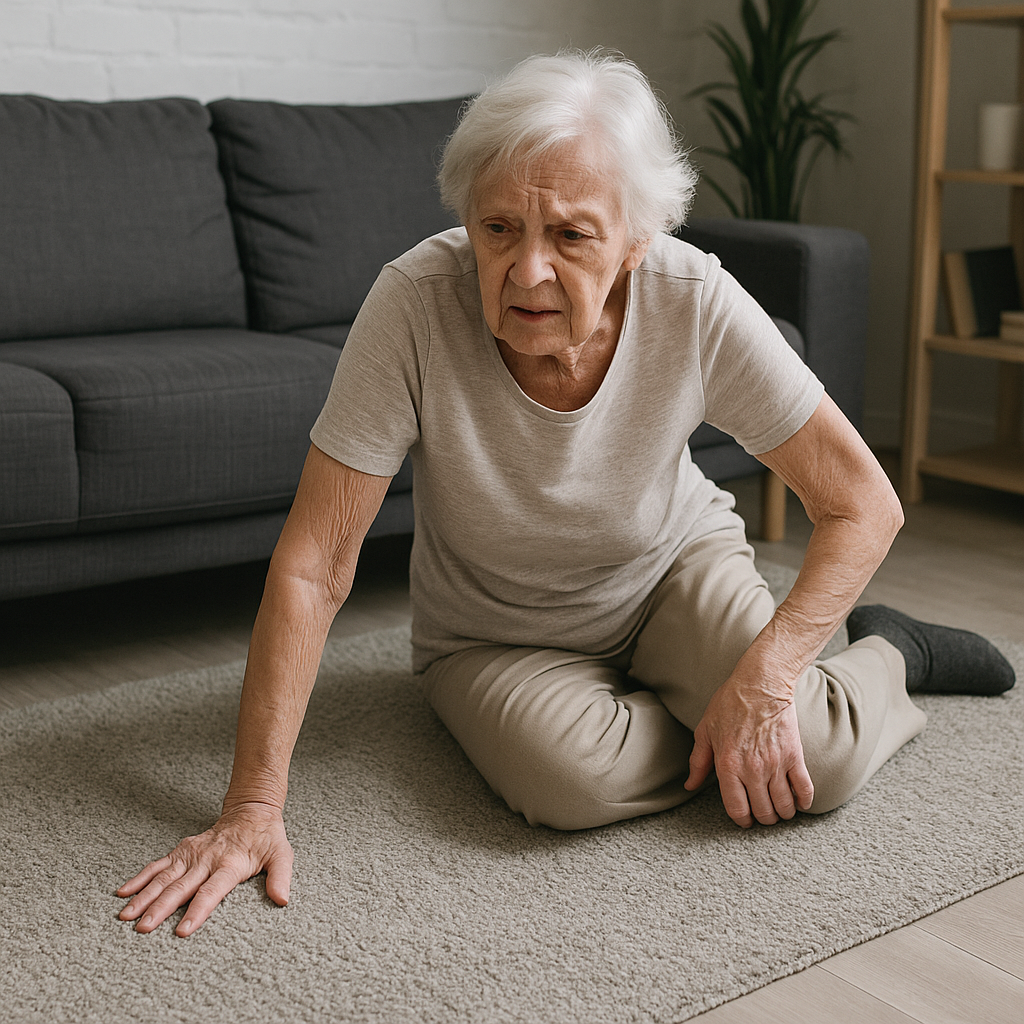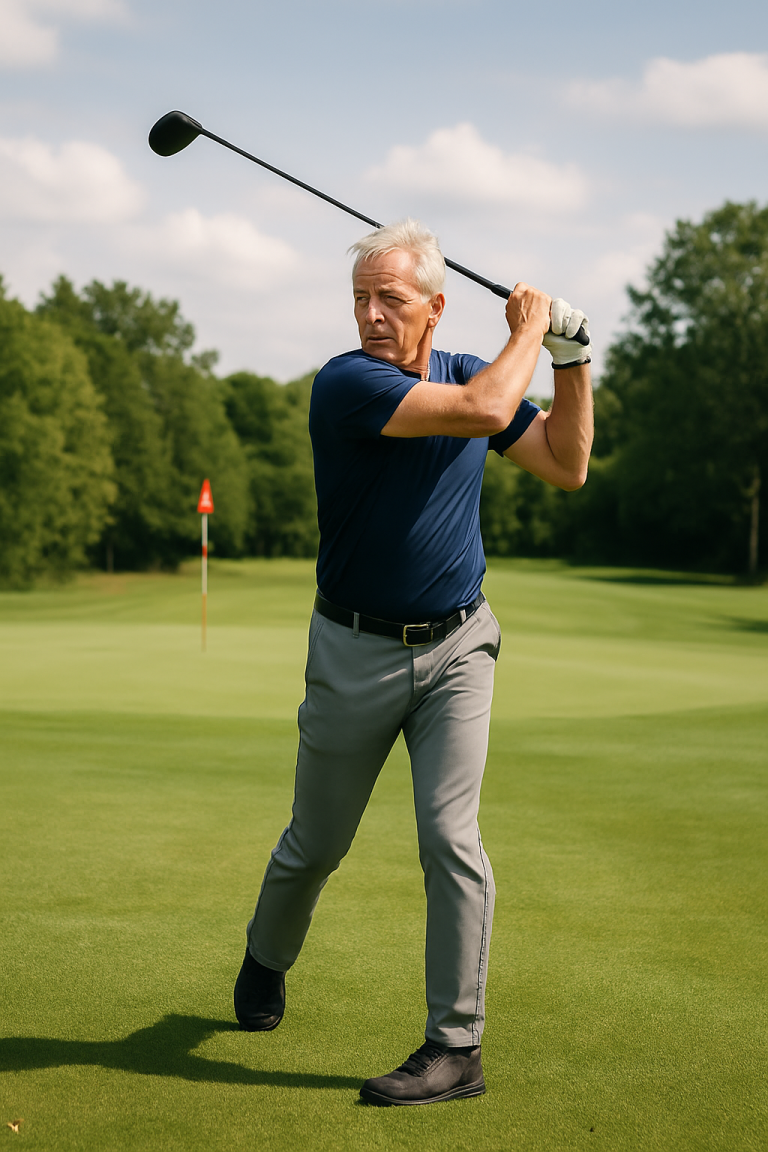As we age, our bodies undergo natural changes that can increase the risk of accidents. Reduced bone density, slower reflexes, changes in vision and balance, and declining muscle mass all contribute to greater vulnerability. For many older adults, accidents are not just inconvenient; they can mark the beginning of a decline in independence and quality of life.
The good news is that functional fitness: exercises that mimic real-life movements and strengthen the body for everyday activities, can play a powerful role in prevention. By maintaining strength, balance, mobility, and coordination, older people can significantly reduce their risk of the most common accidents.
This article explores the most frequent accidents affecting older adults and how functional fitness can help prevent them, with practical examples of exercises and lifestyle strategies.
The Most Common Accidents Among Older Adults
1. Falls
Falls are the single most common and serious accident in older people. According to the World Health Organization, around one in three adults over the age of 65 experiences a fall each year, and many suffer fractures, particularly of the hip or wrist.
Contributing factors:
-
Poor balance and coordination
-
Muscle weakness, especially in the legs
-
Reduced flexibility
-
Poor eyesight or footwear issues
-
Hazards at home, such as loose rugs, poor lighting, or clutter
Consequences:
Beyond physical injury, falls often lead to loss of confidence, fear of falling again, and reduced independence.
Multicomponent training (including muscle power and endurance) led to significant improvements in functional mobility tests such as the Short Physical Performance Battery, Timed Up & Go, gait speed, and six-minute walk in institutionalized older adults.”
(López-López et al., 2024, Geroscience)
2. Slips and Trips
While technically a type of fall, slips and trips deserve their own category. Slips occur when surfaces are wet or uneven, while trips are often caused by obstacles such as cables or pets underfoot.
Contributing factors:
-
Slower reaction times
-
Reduced foot clearance due to muscle weakness
-
Vision problems that make hazards harder to spot
Consequences:
These accidents may result in sprains, bruises, or head injuries, particularly if the individual cannot catch themselves quickly.
3. Lifting and Carrying Injuries
Older adults often injure themselves when lifting shopping bags, moving furniture, or even bending to pick something up. Back strain, shoulder injuries, and joint issues are common.
Contributing factors:
-
Weak core and back muscles
-
Poor lifting technique
-
Reduced flexibility in the hips and knees
Consequences:
These injuries can cause chronic pain, reduced mobility, and avoidance of household tasks—leading to greater dependency.
4. Burns and Scalds
Burns are another common accident, often occurring in the kitchen when handling hot pans, kettles, or ovens.
Contributing factors:
-
Reduced grip strength leading to spills
-
Slower reflexes when touching hot surfaces
-
Declining sensation in the hands due to conditions like diabetes
Consequences:
Burn injuries can range from mild to severe and may take longer to heal in older adults.
5. Road and Pedestrian Accidents
Older adults are also more vulnerable outside the home. Crossing roads, driving, or cycling can pose risks due to slower reaction times, reduced mobility, or difficulty turning the head to check surroundings.
Contributing factors:
-
Slower gait and reduced stride length
-
Stiffness in the neck and shoulders is affecting visibility
-
Fatigue that reduces alertness
Consequences:
Even minor accidents outdoors can shake confidence and discourage physical activity.
6. Choking and Swallowing Accidents
While not always thought of as “accidents,” choking incidents are more frequent in older adults due to reduced saliva production, dental issues, or neurological conditions.
Contributing factors:
-
Weakened swallowing muscles
-
Eating too quickly
-
Poorly fitting dentures
Consequences:
These episodes can be frightening and dangerous if intervention is delayed.
The Role of Functional Fitness in Accident Prevention
Functional fitness focuses on exercises that mirror daily activities. Unlike traditional gym routines that isolate muscles, functional exercises work multiple muscle groups together to improve real-world performance. For older adults, this is particularly beneficial because it enhances the ability to move safely and confidently in everyday life.
The key benefits of functional fitness include:
-
Improved balance and stability
-
Increased strength in major muscle groups
-
Better coordination and reflexes
-
Enhanced mobility and flexibility
-
Stronger bones through weight-bearing activity
Functional training improved activities of daily living, physical functioning, and, in some studies, cognitive outcomes in older adults. Compared to other exercise types, results for balance and mobility were mixed but overall positive.”
(Liu et al., 2024, European Review of Aging and Physical Activity)
Let’s explore how specific exercises can help prevent each type of accident.
Preventing Falls Through Balance and Strength
To reduce falls, it’s essential to strengthen the legs, core, and stabilising muscles while improving balance.
Recommended exercises:
-
Sit-to-Stand: Practise rising from a chair without using the hands to strengthen the thighs and hips.
-
Heel-to-Toe Walk: Improves balance and coordination by mimicking the narrow base of support required when walking on uneven ground.
-
Single-Leg Stands: Holding onto a sturdy surface, balance on one leg to train stability.
-
Step-Ups: Using a low step, practise stepping up and down to build leg strength and mimic everyday movements like climbing stairs.
Tip: Performing these exercises barefoot on a safe surface can also improve proprioception (awareness of body position).
A 24-week program combining resistance and balance training produced greater improvements in dynamic balance, walking speed, and lower limb strength than resistance training alone.”
(Jiang et al., 2025, Journal of Strength & Conditioning Research)
Reducing Slips and Trips with Agility Training
Agility—the ability to react quickly and adjust the body—can mean the difference between stumbling and falling.
Recommended exercises:
-
Side-to-Side Steps: Step quickly from side to side to mimic the movement of dodging obstacles.
-
Marching in Place with High Knees: Improves foot clearance to reduce tripping.
-
Obstacle Course Walking: Practise walking over small objects or around chairs to simulate real-life hazards.
Preventing Lifting and Carrying Injuries Through Core Strength
Core strength is vital for protecting the back and joints when lifting. Functional movements should mimic bending, twisting, and reaching.
Recommended exercises:
-
Farmer’s Carry: Walk while holding weights (or shopping bags) at your sides to strengthen grip, shoulders, and core.
-
Hip Hinge Practice: Learn to bend from the hips with a straight back, reducing strain when picking things up.
-
Wall Push-Ups: Strengthen chest, shoulders, and arms for safer lifting.
-
Torso Rotations: With or without a resistance band, practise controlled rotations to build resilience against twisting injuries.
Reducing Burns and Scalds with Grip and Coordination Training
Good grip strength and hand-eye coordination reduce the likelihood of dropping hot objects or spilling liquids.
Recommended exercises:
-
Hand Squeezes: Use a soft ball or grip trainer to improve hand strength.
-
Fine Motor Tasks: Simple activities like threading beads or squeezing clothespins can enhance dexterity.
-
Overhead Reaches: Strengthening shoulders makes lifting pans or dishes easier.
Preventing Road and Pedestrian Accidents with Mobility Training
Mobility exercises help older adults move freely, maintain a safe stride, and turn the head comfortably.
Recommended exercises:
-
Neck Rotations: Gently turn the head side-to-side to maintain range of motion.
-
Ankle Circles and Flexes: Strengthen lower legs for safe walking and driving.
-
Walking Drills: Practice varying speeds and directions to simulate real-world scenarios.
-
Step Length Practice: Focus on extending stride length safely to maintain confidence when crossing streets.
Reducing Choking Incidents Through Breathing and Posture Exercises
Though not a direct fitness activity, posture and breathing exercises can strengthen the muscles involved in swallowing.
Recommended practices:
-
Seated Breathing Exercises: Strengthen diaphragm control and encourage mindful breathing.
-
Neck and Throat Stretches: Promote flexibility in swallowing muscles.
-
Postural Training: Exercises that open the chest and strengthen the back help maintain upright posture during meals, reducing choking risk.
Putting It All Together: A Sample Functional Fitness Routine
Here’s a simple weekly plan for older adults to cover the main areas of prevention:
-
Monday – Balance & Mobility: Sit-to-Stand, Heel-to-Toe Walk, Ankle Circles, Neck Rotations
-
Wednesday – Strength & Core: Farmer’s Carry, Hip Hinges, Wall Push-Ups, Torso Rotations
-
Friday – Agility & Coordination: Side-to-Side Steps, Obstacle Course Walking, Hand Squeezes
-
Daily – Flexibility & Breathing: Gentle stretching, Seated Breathing Exercises, Posture Reset
Sessions can be 20–30 minutes, adjusted for ability and comfort.
Adding timing and coordination training to strength programs improved gait and mobility in older adults, beyond strength gains alone.”
(Brach et al., 2022, PMC – Journal of Gerontology)
Lifestyle and Environmental Considerations
Functional fitness is powerful, but it works best alongside other preventive strategies:
-
Home Safety: Remove loose rugs, improve lighting, and install grab bars where needed.
-
Footwear: Supportive, non-slip shoes reduce risk of slips.
-
Vision and Hearing Checks: Regular check-ups catch problems early.
-
Nutrition: Adequate calcium, vitamin D, and protein support bone and muscle health.
-
Hydration: Prevents dizziness and reduces fall risk.
Accidents in older adulthood are common but not inevitable. With the right combination of functional fitness exercises, lifestyle adjustments, and awareness, older adults can significantly reduce their risk. More importantly, they can maintain independence, confidence, and a higher quality of life.
Functional fitness doesn’t just prepare the body for exercise—it prepares it for life. By training the movements we use every day, we can make aging safer, stronger, and more empowering.


